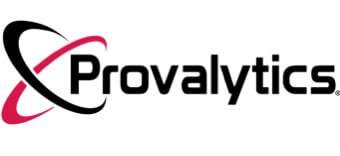Understanding Multi-Touch Attribution in Digital Marketing
TLDR: Multi-touch attribution in digital marketing is a method to understand and credit multiple touchpoints in a customer’s journey leading to a conversion. While there are various models like First Interaction, Last Interaction, and Linear, each has its advantages and challenges. It’s essential to recognize the difference between attribution, which assigns credit, and contribution, which understands the collective impact of marketing strategies. Utilizing specialized tools can provide deeper insights into marketing attribution and campaign performance.
In the world of digital marketing, attribution is critical for measuring campaign effectiveness. Multi-touch attribution (MTA) is a technique for determining the value of each touchpoint or interaction a customer has with a brand during their conversion journey.
🚀 Yes, I Want The 2024 Playbook!
MTA is superior to traditional digital attribution models, which credit the last touchpoint before a conversion. Instead, MTA considers all of the touchpoints, exposures, and channels with which a customer interacts and calculates the impact of each on conversion. This method provides a more comprehensive, bottom-up view of the customer journey and assists marketers in determining which channels and messages are most effective.

Benefits of Multi-Touch Attribution in Digital Marketing
MTA has the benefit of providing more granular insights than traditional attribution models. Marketers can use MTA to assess the effectiveness of each touchpoint and adjust their marketing mix accordingly. This enables them to optimize their campaigns in order to achieve better results.
From Attribution to Contribution
While attribution aims to assign credit to specific touchpoints, contribution focuses on understanding how various marketing strategies collectively lead to conversions. Instead of trying to fit the complex customer journey into a rigid model, contribution seeks to grasp the combined impact of all marketing channels.
Tools for Marketing Attribution
Several platforms, like Google Analytics and specialized attribution tools, offer insights into marketing attribution. These tools not only help in understanding attribution but also provide real-time data on campaign performance.
Understanding Different Attribution Models
While multi-touch attribution is essential, it’s equally crucial to understand the various models available:
- First Interaction: This model gives 100% credit to the first ad or content a customer interacts with.
- Last Interaction: Here, the last ad or content a customer interacts with gets all the credit.
- Linear: Every piece of content the customer interacts with receives an equal share of the credit.
- Time-Decay: More recent interactions get more credit, but all touchpoints receive some acknowledgment.
- U-Shaped: The first content and the lead conversion content each get 40% credit, with the remaining 20% divided among other touchpoints.
- W-Shaped: The first content, lead creation, and lead conversion content each get 30% credit, with the remaining 10% spread across other interactions.
Limitations of Multi-Touch Attribution in Digital Marketing
MTA, on the other hand, has some limitations. It is primarily concerned with digital interactions and may not provide information about offline interactions. This can be a significant disadvantage for companies with a significant offline presence or with a longer sales cycle. Furthermore, MTA does not consider the impact of brand messaging, which can be critical in increasing brand awareness and creating long-term value.
Despite these limitations, MTA is an effective tool for marketers seeking to assess the effectiveness of their digital marketing efforts. Marketers can gain a better understanding of the customer journey and create more effective campaigns by analyzing each touchpoint. MTA gives marketers a more nuanced view of attribution, allowing them to optimize their campaigns and drive better results.
MTA is a must-have tool for digital marketers who want to understand the effectiveness of their campaigns. MTA provides insights not available with traditional attribution models by providing a bottom-up view of the customer journey and analyzing each touchpoint. Despite its limitations, MTA remains an important tool for marketers looking to optimize their digital marketing efforts and achieve better results.
Challenges in Marketing Attribution
While attribution is a powerful tool, it’s not without its challenges:
- Untrackable Touchpoints: Not all marketing interactions, especially offline ones, can be tracked.
- Codependency of Touchpoints: Different marketing efforts can influence each other, making it hard to attribute conversions to a single source.
- Multiple Models: Different attribution models can yield different results, making it challenging to choose the best one.
How is MTA different from traditional attribution models?
Traditional attribution models give credit to the last touchpoint before a conversion, while MTA looks at all touchpoints and interactions along the customer journey. This provides a more comprehensive view of the customer journey and helps marketers understand the impact of each touchpoint.
What are the benefits of using MTA in digital marketing?
MTA provides more granular insights than traditional attribution models, allowing marketers to evaluate the effectiveness of each touchpoint and adjust their marketing mix accordingly. This helps them optimize their campaigns and deliver better results.
What are the limitations of MTA?
MTA is primarily focused on digital touchpoints and may not provide insights into offline interactions. Additionally, MTA does not take into account the impact of brand messaging, which can be critical in building brand awareness and creating long-term value.
How can marketers use MTA to optimize their campaigns?
By analyzing each touchpoint, marketers can gain a deeper understanding of the customer journey and create more effective campaigns. MTA provides a more nuanced view of attribution, allowing marketers to optimize their campaigns and drive better results.
Is MTA suitable for all types of businesses?
MTA is most effective for businesses with a significant digital presence and where the sales cycle is shorter. For businesses with a significant offline presence or where the sales cycle is longer, MTA may not provide as much value.

